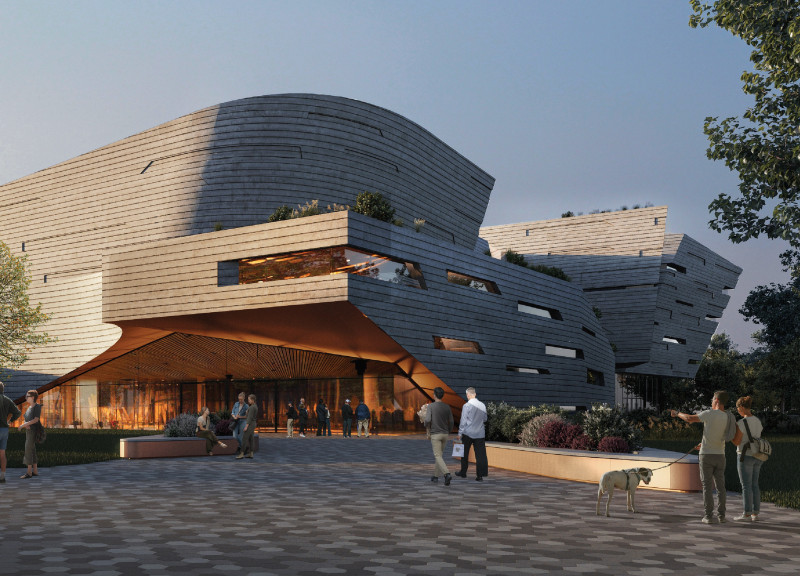5 key facts about this project
At its core, the project represents a commitment to innovative design principles, highlighting the importance of environmental consciousness in contemporary architecture. The structure serves a multifaceted role, accommodating various activities that foster community interaction and engagement. By integrating spaces for both recreation and social gatherings, the design promotes a sense of belonging and encourages community cohesion.
The architectural design employs a range of materials, each selected for its structural performance and visual appeal. Concrete provides durability, while extensive glazing enhances natural light, creating an inviting atmosphere within. Timber accents introduce warmth, balancing the robust nature of concrete and steel, which form the main structural components. The thoughtful use of these materials not only supports the building's functionality but also aligns with sustainable building practices by incorporating recycled and locally sourced elements.
Key aspects of the design include a responsive facade that adapts to varying environmental conditions. Horizontal and vertical elements play off each other, creating a dynamic interplay of light and shadow throughout the day. This not only adds visual interest to the project but also reduces the need for artificial lighting, therefore enhancing its energy efficiency. Elements such as louvers and overhangs are strategically placed to control solar gain, further exemplifying the building’s commitment to sustainability.
Interior spaces have been designed with a focus on flexibility and user comfort. Open floor plans allow for adaptability, accommodating different functions ranging from informal gatherings to structured events. Careful consideration has been given to the flow of circulation, with clear pathways guiding users seamlessly from one area to another. Acoustic treatments have been integrated within the interiors to ensure that sound management supports both solitude and collaboration, enhancing user experience throughout the building.
Landscaping plays a pivotal role in the overall project, providing not just aesthetic appeal but also ecological benefits. Native plants have been incorporated to create a landscape that requires minimal maintenance and conserves water, further reflecting the project’s sustainability goals. Outdoor spaces extend the interior functionality, offering areas for recreation and relaxation that connect users to nature.
The unique design approaches taken in this project can be seen in its integration of technology and natural elements. Smart building systems are employed to monitor energy use and adjust lighting and climate controls according to occupancy, which enhances spatial comfort while reducing resource consumption. The seamless blend of these technologically advanced features with natural forms reflects a forward-thinking attitude towards modern living.
In summary, the architectural project encapsulates a conscientious approach to design and function, targeting the needs of its community while embracing sustainable practices. The materials, design strategies, and spatial organization all contribute to an environment conducive to social interaction and well-being. For those interested in delving deeper into the project's intricacies, including architectural plans, architectural sections, and architectural designs, exploring the full presentation will provide a comprehensive insight into the ideas that shaped this noteworthy endeavor.























